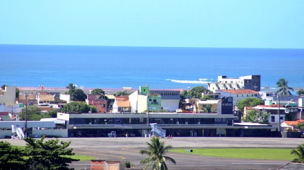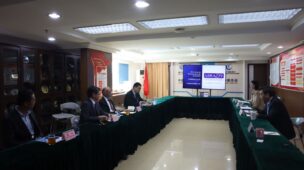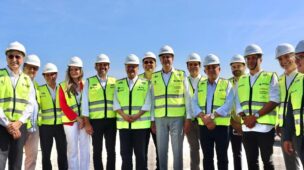Tempo de leitura: 4 minutos
We had discussed the rise of South Korea and Taiwan earlier. While the Chinese story is well talked about, most of the discussion is regarding the achievements of the last two decades when it showed astonishing growth. In the early Nineties, it was not significantly different from India. Even in 2005, it had a GDP of a little over $2 trillion which was then a little more than double of the Indian level. India reached the $2 trillion mark by 2014 by which time their GDP crossed $10.4 trillion.
Currently, even the most optimistic of future scenarios by die-hard optimists do not visualise India replicating that type of growth. It is often also said and believed that this achievement is because it is a dictatorship and thus a fair comparison with a democratic India cannot be made. What is thus casually overlooked are the structural changes that China sought to focus upon in order to attain modernity. These we submit had little to do with dictatorship. India too, in the early Plan years had a similar focus but subsequently lost track because of its overwhelming focus on securing and establishing IPR/IDR laws, rules etc.
We depict the China story by going back to a period a little prior to the start of the miracle, to the late 1970s when Deng Xiaoping, as part of his re-issuance of the ‘Four Modernisations’, launched the Chinese SEZ programme.
The Chinese SEZs (four were initially set up) did not get formed in a closed enclave but in what would become open megacities. Shenzhen was an SEZ spread over 2,000 square kilometres, while Hainan spread over 34,000 square kilometres. The first move was to create and build new city structures and then build large industrial areas around it. These were not an immediate success and thus encountered severe criticism about corruption and wastage of public money, but took off by the end Eighties and early Nineties. The selection of the initial centres was based on ‘the most likely to succeed’ criterion i.e. proximity to Hong Kong (their window to the world) and coastal proximity.
In contrast, the first Indian Special Economic Zone (SEZ) had come up in the mid-1960s: the Kandla SEZ. There was undoubtedly a port to which this SEZ was attached but no thought had then been given to the possibility of developing a modern city alongside. It was designed and even now continues to be a somewhat closed enclave for export-oriented production.
In India, SEZs are identified with tax and exchange control relaxations. But the Chinese SEZs were basically areas exempted from the application of various domestic laws, rules and procedures by giving each SEZ chief, usually a senior trusted party leader, wide discretion to adapt international best practices. These best practices would, incidentally, include but not be confined to, tax and exchange control regulations. It may be mentioned here that this approach had also experienced internal political and bureaucratic resistance there, but Deng had not allowed the criticism to prevail. Once these SEZs got going, by the mid to late Nineties, special high-tech zones were set up within a selected section of the mega complexes to give a boost to domestic research and development and technology-oriented production. In between, to attract investment from Taiwan and other places, separate dedicated centres were set up to attract niche interest.
Economic growth was thus initially secured in China in these selected provinces along with an intent to make it overflow and spill over across the remaining part of the country in ever increasing numbers and sizes of ‘concentric circles’ much like the ripples in a pond. Alongside, throughout the entire period very strong state focus on education and health systems continued.
Once the initial SEZs got going, new zones were opened in other parts of the country. A bit later the ‘National Tourist and Holiday Resorts’ were set up to exploit rich tourist resources and boost domestic tourism. The national laws and procedures prevalent in the residual non SEZ areas were modified and realigned only after the SEZ testing experiences gave satisfactory results. The distinct differences from the current Indian practices but also their resemblance to the creation of ‘Marshallian’ industrial districts is thus quite striking.
One of the often forgotten ‘elephants in the room’ is that the USA, the UK and Europe had largely been urbanised by the mid-twentieth century. The Chinese leadership, Deng Xiaoping in particular, recognised that they first needed to create the building blocks of modernity. In India, as we discussed in our manufacturing essay, the Indian authorities, post the initial efforts of the 1950s got way too engrossed with trying to manage ‘market minutiae’ and these lessons from the experiences of other countries went unnoticed.
Subsequently, in the post-liberalisation period, when in one interpretation the state had liberalised ‘matters economic’ and thus could and should have focused elsewhere to solve governance issues, the glamour of the economic ministries still prevailed. Undoubtedly, the state did promote SEZs and industrial areas but with a distinct Indian flavour and the overwhelming importance of the chef remained intact. This allowed the Indian uniqueness to continue.






Os comentários foram encerrados, mas trackbacks e pingbacks estão abertos.